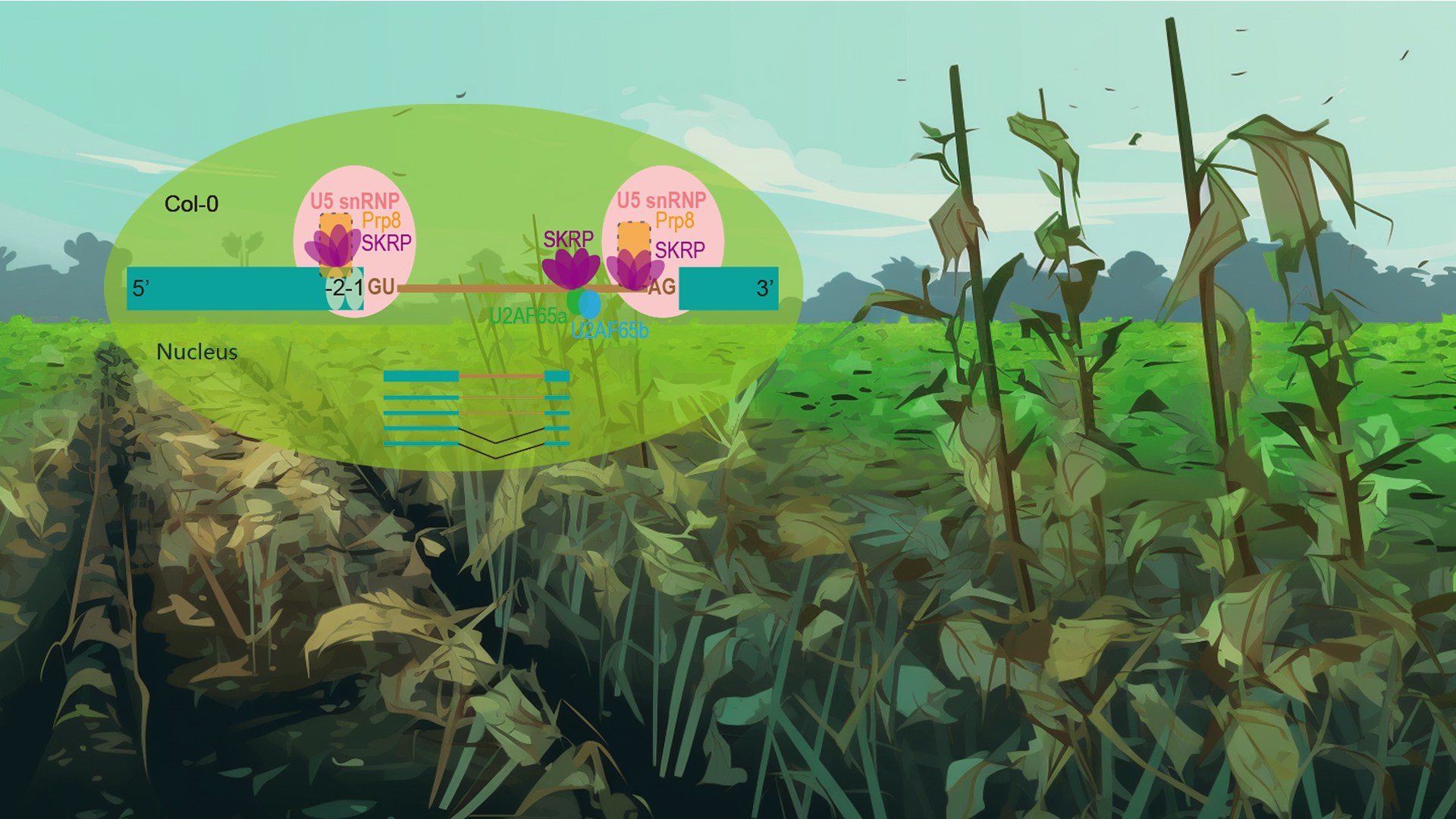The outbreak of crop diseases seriously threatens global food and ecological security, and the enhancement of plant resistance is usually highly effective in controlling diseases. More and more studies have found that RNA-binding proteins directly or indirectly regulate pre-mRNA splicing to affect plant immunity. Although the mechanisms of RNA-binding proteins (RBPs) in animals have been studied, the mechanisms of RBPs in plants are unclear.
RNA splicing, a fundamental feature of the processing of RNA in many organisms, is catalyzed by the highly dynamic spliceosome. In eukaryotes, the spliceosome is composed of five core small nuclear ribonucleoprotein complexes (U1, U2, U4, U5, and U6 snRNPs) and lots of other RNA-binding proteins. The functions of some components of the spliceosome have been reported in animals, and some components are important targets for drug design. Still, the functions of their homologous proteins in plants are mostly unclear.

Associate Professor Zhe Wu’s group from the School of Life Sciences at the Southern University of Science and Technology (SUSTech) and Professor Suomeng Dong’s group from the College of Plant Protection at Nanjing Agricultural University (NAU) have found that the immune repressor SKRP, associated with spliceosome is a novel RNA-binding protein, directly binds exon 3’ end to regulate pre-mRNA splicing in Arabidopsis.
Their work, entitled “Plant immunity suppressor SKRP encodes a novel RNA-binding protein that targets exon 3’ end of unspliced RNA”, has been published in New Phytologist, a high-impact journal in the plant field.
SKRP has already been reported to negatively regulate plant immunity in soybeans. Based on the previous research, this study showed that SKRP directly binds a large amount of RNA in Arabidopsis by using eCLIP-seq. Further analysis found that SKRP mainly binds the 3’ end of the unspliced exon. SKRP can also bind the 3’ end of the intron. The specific RNA-binding pattern of SKRP is similar to the binding mode of Prp8, the core component of U5 snRNP in yeast, and SKRP interacts with multiple spliceosome components, including PRP8.
RNA-seq analysis revealed that approximately 80% of the genes containing SKRP-regulated splicing events are bound by SKRP, including the positive regulators of plant immunity UBP25 and RAR1. The decrease of unspliced UBP25 and RAR1 in skrp mutants promotes splicing efficiency. By transiently expressing UBP25 and RAR1 in Nicotiana benthamiana, the researchers found that UBP25 and RAR1 without normal splicing of introns can inhibit the function of normally spliced transcripts in plant immunity, suggesting that SKRP may inhibit UBP25 and RAR1 intron splicing to negatively regulate plant immunity. In addition, the study also found that SKRP can form very stable polymers in plants, and this feature is closely coupled with the regulation of SKRP in plant immunity and splicing.
In summary, this study reported the mechanism of the novel RNA-binding protein. AtSKRP, a novel spliceosome-associated protein, targets exon 3’end of unspliced RNA and represses intron removal at positive immune regulatory genes to repress plant immunity. SKRP could serve as a novel gene-editing target to improve crop disease-resistant traits.
Ling Chen, a graduate from NAU and visiting scholar at SUSTech, is the first author of this paper. Associate Professor Zhe Wu at SUSTech and Professor Suomeng Dong at NAU are the co-corresponding authors. Professor Yufeng Wu, Dr. Zhihui Xu, Dr. Jie Huang, and graduate student Haidong Shu, all of NAU, along with Research Associate Professor Danling Zhu and Dr. Yufan Hui from SUSTech, also participated in this research.
This work was supported by the National Natural Science Foundation of China (NSFC), Guangdong Innovation Research Team Fund, Shenzhen Innovation Committee of Science and Technology, and the Key Laboratory of Molecular Design for Plant Cell Factory of Guangdong Higher Education Institutes.
Paper link: https://nph.onlinelibrary.wiley.com/doi/epdf/10.1111/nph.19236
To read all stories about SUSTech science, subscribe to the monthly SUSTech Newsletter.
Proofread ByAdrian Cremin, Yingying XIA
Photo By